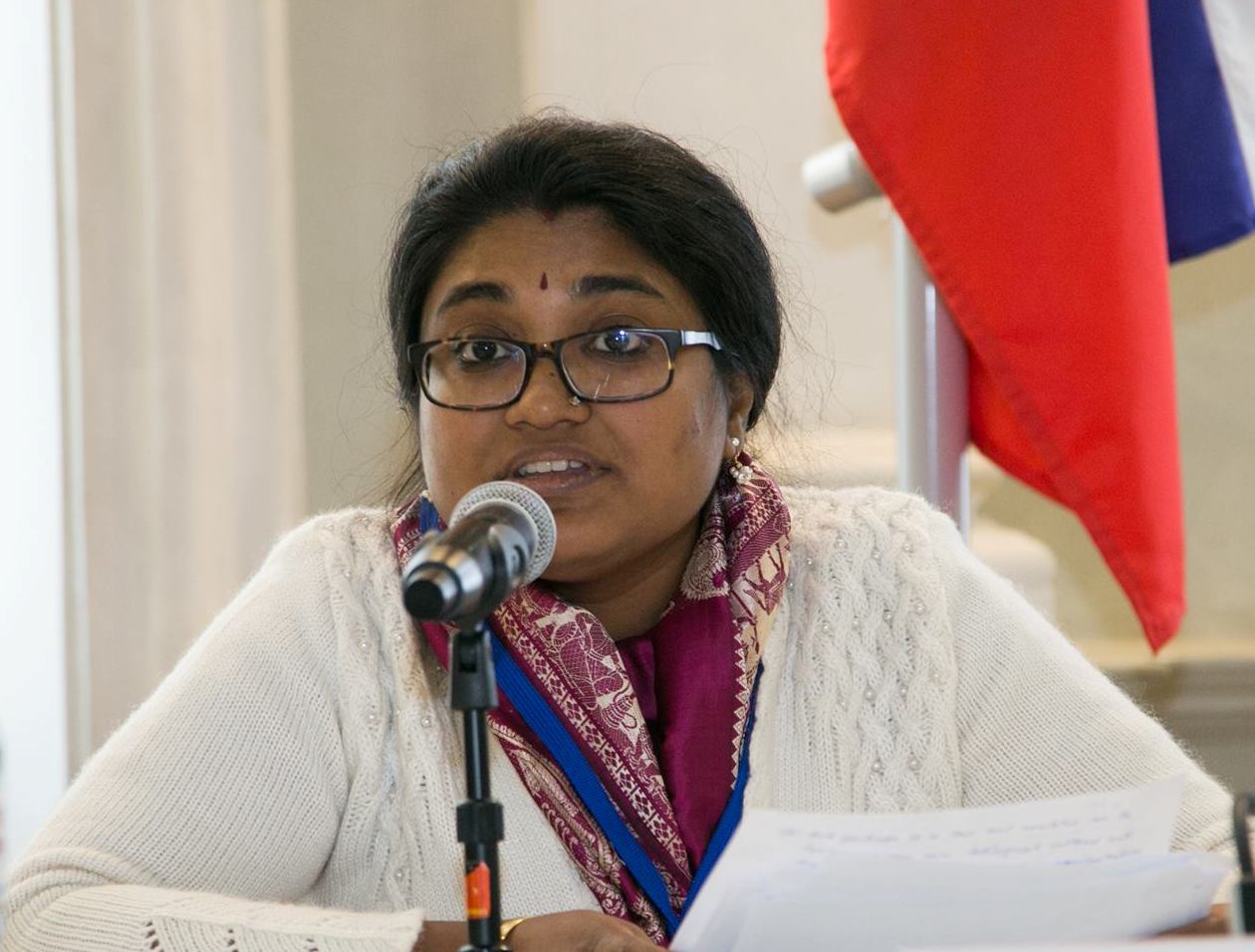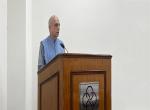As we recently completed 75 years of Indian independence and will also observe the 155th birth anniversary of Sister Nivedita (1867-1911) on 28 October, it is time to uncover a not-so-well-known part of the history of our freedom struggle—Sister Nivedita’s involvement in the revolutionary movement in Bengal in the early twentieth century. Her contribution to India’s freedom struggle has received scant attention from historians; some historians even deny that she had any significant role to play. Sumit Sarkar, for instance, has dismissed Nivedita’s so-called involvement in the movement as a “legend” carefully constructed by her biographers.[1] It is true that we find little mention of her in the memoirs of many revolutionaries, but that could be owing to the fact that the members of the revolutionary secret societies preferred to be discreet about their connections. However, it is not true that we do not find any mention of Nivedita at all. On the contrary, whatever little mention we do find of her is quite significant. Sri Sankari Prasad Basu has meticulously traced the accounts of revolutionaries who had mentioned Nivedita in connection with the revolutionary movement. The present commentary attempts to give a glimpse of this association.
S P Basu goes to the extent of calling the period from August 1902 to July 1905 in Indian politics as the ‘Nivedita Age’, as, according to him, during this period, she played the most important role in influencing the growth of nationalist consciousness, establishing connections with different revolutionaries and revolutionary groups, and touring the country giving lectures with the aim of recruiting young volunteers for secret societies and asking for patronage from princely states. Aurobindo Ghose (1872-1950) was undoubtedly the leader and the face of the revolutionary movement in Bengal. But he started to get actively involved in nationalist politics 1903 onwards, and moved to Bengal to take complete charge as the leader of the revolutionary movement only in 1906. Before this period, he was trying to organize the revolutionaries remotely from Baroda, where he was in the service of the Maharaja Gaekwad. But Nivedita started taking an active part in the organization of secret societies before Aurobindo got properly involved in the same. In the words of Aurobindo’s own brother, the revolutionary Barindra Kumar Ghose, as a leader of the political radicals, Sister Nivedita was a pioneer preceding the involvement of Aurobindo. In the period which Basu dubs as the ‘Nivedita Age’, the Indian political leadership had little clue as to where the national movement was going; it was an age when the future revolutionary leaders were yet to come up significantly, and during this period, Nivedita played a crucial role in awakening the nationalist spirit as well as helping in the organization of revolutionary youth by recruitment, training and coordination.
Nivedita had attended the Calcutta session of the Indian National Congress in December 1901, and befriended some Indian nationalists, chief amongst whom was the ‘Moderate’ leader Gopal Krishna Gokhale. Soon after this, she also came in contact with Kakuzo Okakura and her old friend Surendranath Tagore, who were working jointly to establish secret societies. In March 1902, her letters started being intercepted by the British police. After July 1902, she set out on lecture tours across India. On one such lecture tour to Baroda, she met Aurobindo Ghose for the first time in 1902 and in due course became his comrade in arms. Sri Aurobindo wrote many years later: “I knew very well Sister Nivedita (she was for many years a friend and a comrade in the political field).”[2] While still in Baroda, Aurobindo planned a central organization for coordinating the different revolutionary groups in Bengal. A core council of the organization was formed, and Aurobindo himself mentions Nivedita’s name as one of the five members of this core council. Nivedita, who had insights into organized revolutionary work from her past experience of association with the Irish movement, was, however, not in favour of forming central organizations for revolutionary purposes. Her simple logic was that if one member got arrested at the hands of the British, the latter would soon be able to trace the others with the help of this one link.[3]
Barindra wrote that Nivedita was intimately connected with the secret society circle that operated in Bengal at that time, and that he himself had visited her at her residence in Baghbazar several times for work related to their secret society. He also records that Nivedita donated nearly 150 books to the library of the secret society that operated from 108 Upper Circular Road. These included books on the Irish nationalist movement, Dutch Republic, biographies of Garibaldi and Mazzini, Revolt of 1857, Todd’s Annals and Antiquities of Rajasthan, Uncle Tom’s Cabin, Mahabharata, Ramayana, books on colonial Indian economy by Dadabhai Naoroji, Romesh Chundra Dutta, and William Digby, Indian history, European history, history of England, Cromwell’s life, Bloch’s War Made Impossible, one book on scientific weapons, and so on. The purpose behind donating these books was to create a school or study circle for training revolutionaries at the centre with the help of these books. The idea was that this first group of trained revolutionaries would in turn train others and spread the revolutionary movement across the length and breadth of the country. Barin Ghose was the first student of this revolutionary school and in time, others like Debabrata Basu, Nalin Mitra, Jyotish Samajpati, Indranath Nath also joined.
On 2 May 1906, Nivedita wrote from Mussoorie to Josephine Macleod, another follower of Swami Vivekananda: “I am here these 3 weeks recruiting and in a few days I hope to begin work. That ought to last 6 or 7 weeks on end to be renewed again, either immediately or on reaching Calcutta.”[4] The reference in the letter is cryptic and it is not clear whom she was recruiting and for what purpose. On account of its cryptic nature, it may be more easily surmised that she was recruiting young people for the revolutionary cause. That this—recruiting young revolutionaries—was one of her main revolutionary activities is attested by the reminiscences of many revolutionaries. One such revolutionary was Hemchandra Kanungo. He wrote a serial essay “Banglar Biplab Kahini” in the magazine Mashik Basumati. In this essay, one finds detailed account of Nivedita’s role in the revolutionary movement. S P Basu also mentions that the government Intelligence Department must have followed Kanungo’s writings, as they cited his account of Nivedita’s involvement in the revolutionary movement in their report on the Ramakrishna Mission.[5]
On 20 May 1903, Nivedita wrote to Macleod: “Last week I missed writing because I had gone away lecturing to Midnapore…I think my work in Midnapore was of some use. I spoke 12 or 13 times in 5 days. When one can do this sort of thing, it is generally of some value, I think, however little. But oh Yum dear, from having so much confidence in myself—you do not know how little I have now! I am told that the boys find it so difficult to understand my lectures. They pass over their heads. I try to use all instruments, but I see very plainly that I cannot come directly in contact with the people. I have to find channels—to speak through others—and the ideas become modified.”[6] Midnapore was the district that produced several revolutionaries like Gyan Bose, Nirapad Ray, Satyendranath Bose, Khudiram Bose and Hemchandra Kanungo. We find an account of this Midnapore trip of Nivedita’s in Kanungo’s serial article mentioned above.
Kanungo recorded how they were all very moved to find in Nivedita a great soul who inspired them to be fiercely patriotic and embrace a life of austerity and sacrifice not only through her words, but her actions as well. About her lectures, Kanungo gave us the following information. Nivedita stayed there for five days. Every evening, she gave lectures on politics garbed as lectures on religion; and in the morning, she would address questions arising out of those lectures. Her first lecture made several people leave; somebody warned her that it was probably because her political message was too strong and revolutionary, and probably the next lecture would also not get many ears. Nivedita replied that he should not try to scare her, as, in her veins still ran the blood of a free race. She said plainly that her lectures were not meant for those who were afraid. Kanungo noted that the turn-out for the next lecture was poor, but Nivedita carried on her work with undiminished enthusiasm. Further, Kanungo and his associates got their physical culture gymnasium (akhara) inaugurated by Sister Nivedita, who did it most heartily by fencing with the sword, moving the mace, swirling the sticks and doing other physical activity herself. Another day, Nivedita also addressed a meeting of local women, and even taught some of them to shoot with a gun. Kanungo gratefully acknowledged that it was Nivedita who revived their nearly dead spirits.[7]
S P Basu is of the opinion that Jatindranath Mukhopadhyay or Bagha Jatin was certainly one of the members of Nivedita’s volunteer corps. In all likelihood, Bagha Jatin first came in contact with Nivedita in 1899 in connection with the plague-relief work she conducted in Calcutta, and remained in touch with her regarding revolutionary matters. Bagha Jatin had sent Birendranath Duttagupta and Satish Sarkar to kill the British officer Shamsul Alam. Of them, Satish Sarkar used to visit Nivedita as Bagha Jatin’s emissary. When Nolini Kanta Gupta, a typical recruit of Aurobindo Ghose’s group, approached Nivedita with the desire to learn how to make bombs, she approached her friend Acharya Jagadish Chandra Bose to allow him to use his laboratory. Acharya Bose arranged for Gupta to use the laboratory of Acharya Prafulla Chandra Ray. It is a different matter that Gupta probably did not have the opportunity to transform this plan into reality.[8]
Thus, from the brief foregoing sketch, it is clear that, from creating national consciousness in Indians through her lectures and writings to recruiting and training young men for freedom struggle—Sister Nivedita supported the cause of Mother India in every conceivable way. Given the powerful woman that she was, it is unlikely that she would be involved in a cause in some capacity and not give it the gift of her scintillating intellect, fiery passion, whole-hearted dedication, and organizational acumen. Thus, if Nivedita was involved in the national movement, she was not so without leaving her indelible mark on that age.
Endnotes
[1]Sankari Prasad Basu, Nivedita Lokamata, vol. 2, Kolkata: Ananda Publishers, 1987, p. 26.
[2]Sri Aurobindo, Letters on Himself and the Ashrama, vol. 35, Pondicherry: Sri Aurobindo Ashram Trust,2011, p. 25.
[3]Basu, Nivedita Lokamata, vol. 2, p. 186.
[4]Sankari Prasad Basu, ed., Letters of Sister Nivedita, vol. 2, Calcutta: Nababharat Publishers, 1960, p. 804.
[5]Basu, Nivedita Lokamata, vol. 2, p. 190.
[6]Basu, ed., Letters of Sister Nivedita, vol. 2, pp. 568-69.
[7]Hemchandra Kanungo’s account cited in Basu, Nivedita Lokamata, vol. 2, pp. 190-91.
[8]Peter Heehs, The Bomb in Bengal: The Rise of Revolutionary Terrorism in India 1900-1910, New Delhi: Oxford University Press, 1993, p. 110.
(The paper is the author’s individual scholastic articulation. The author certifies that the article/paper is original in content, unpublished and it has not been submitted for publication/web upload elsewhere, and that the facts and figures quoted are duly referenced, as needed, and are believed to be correct). (The paper does not necessarily represent the organisational stance... More >>
Image Source: https://www.thehindu.com/books/books-reviews/article20010687.ece/alternates/FREE_435/10frNivedita4ajpg











Post new comment